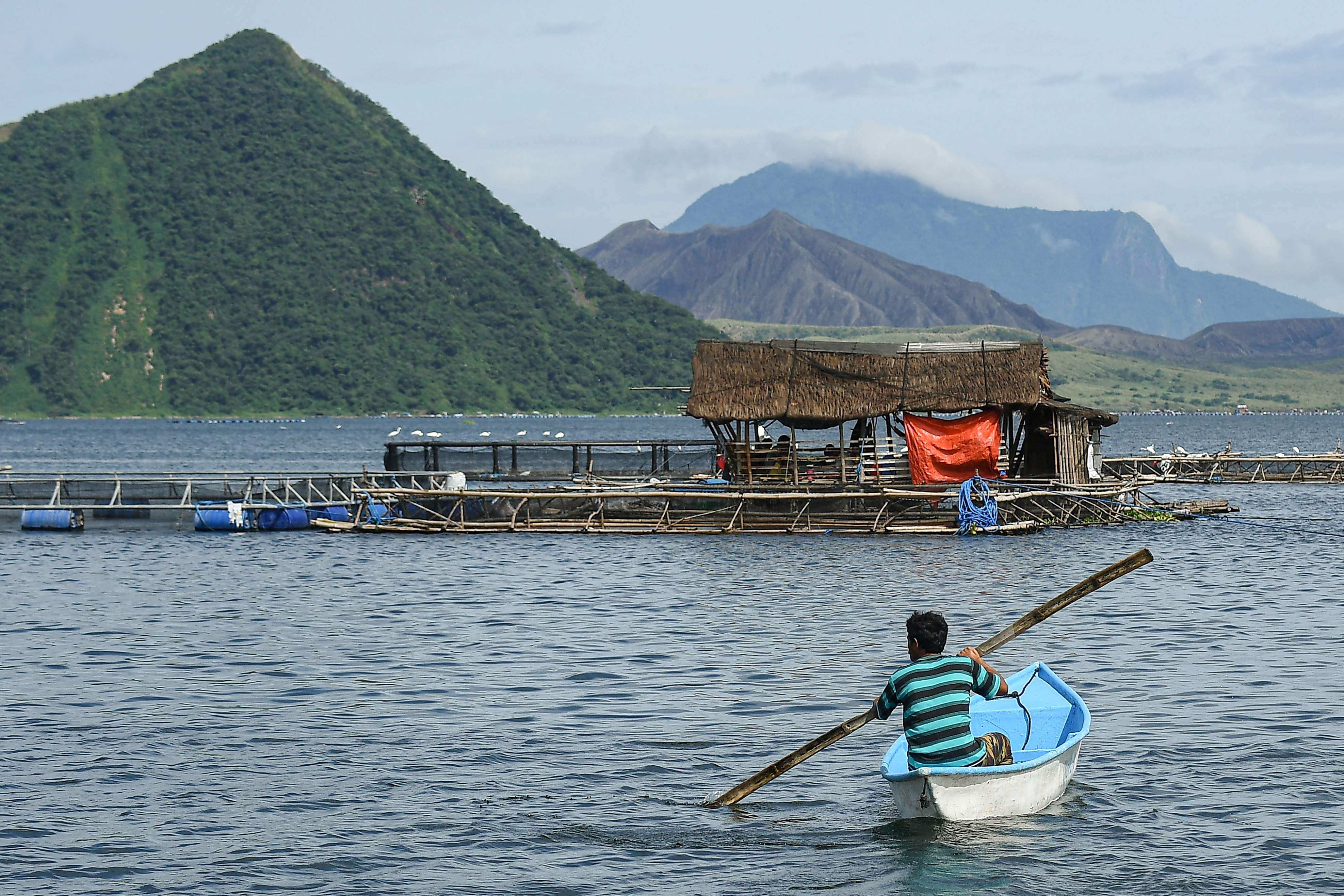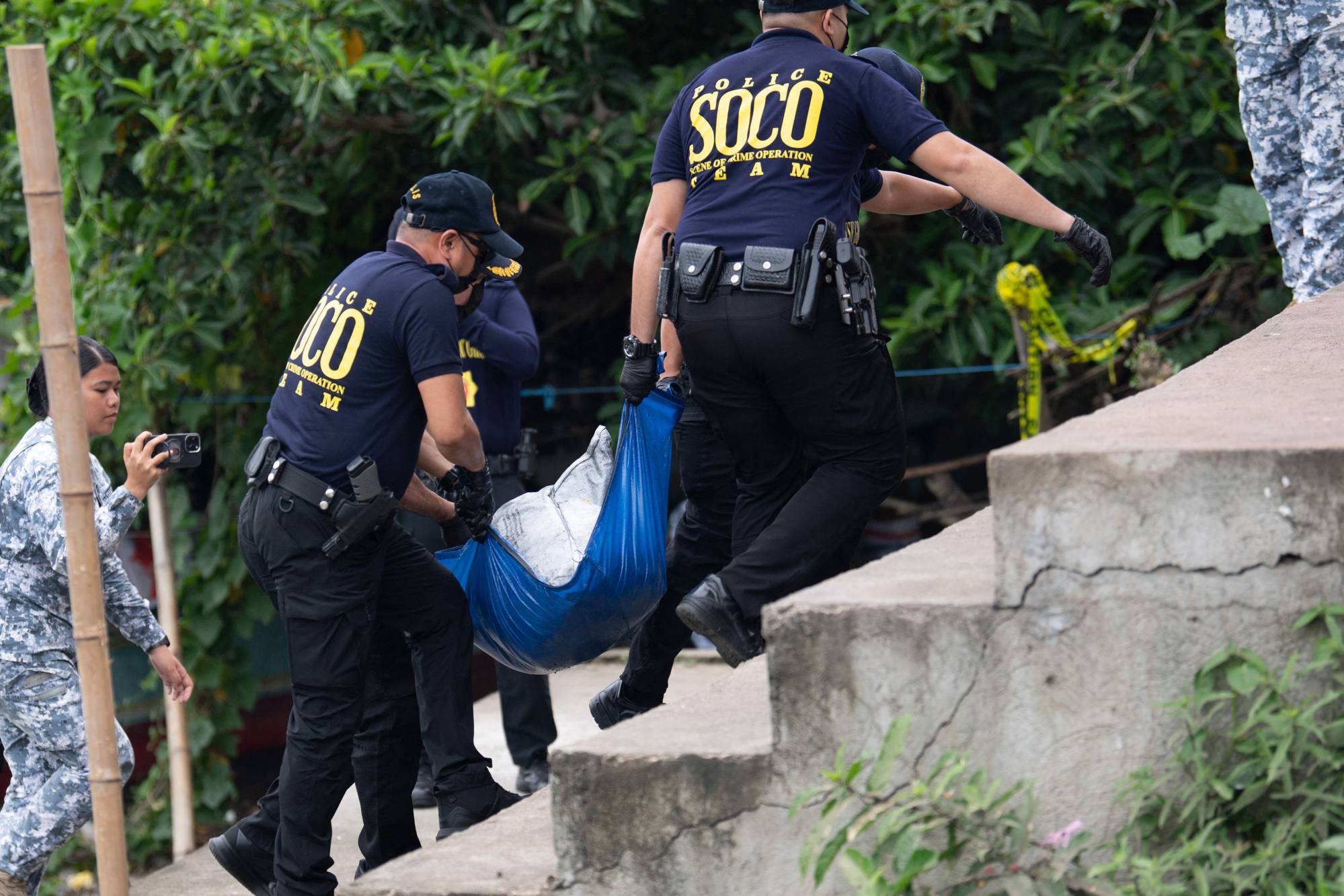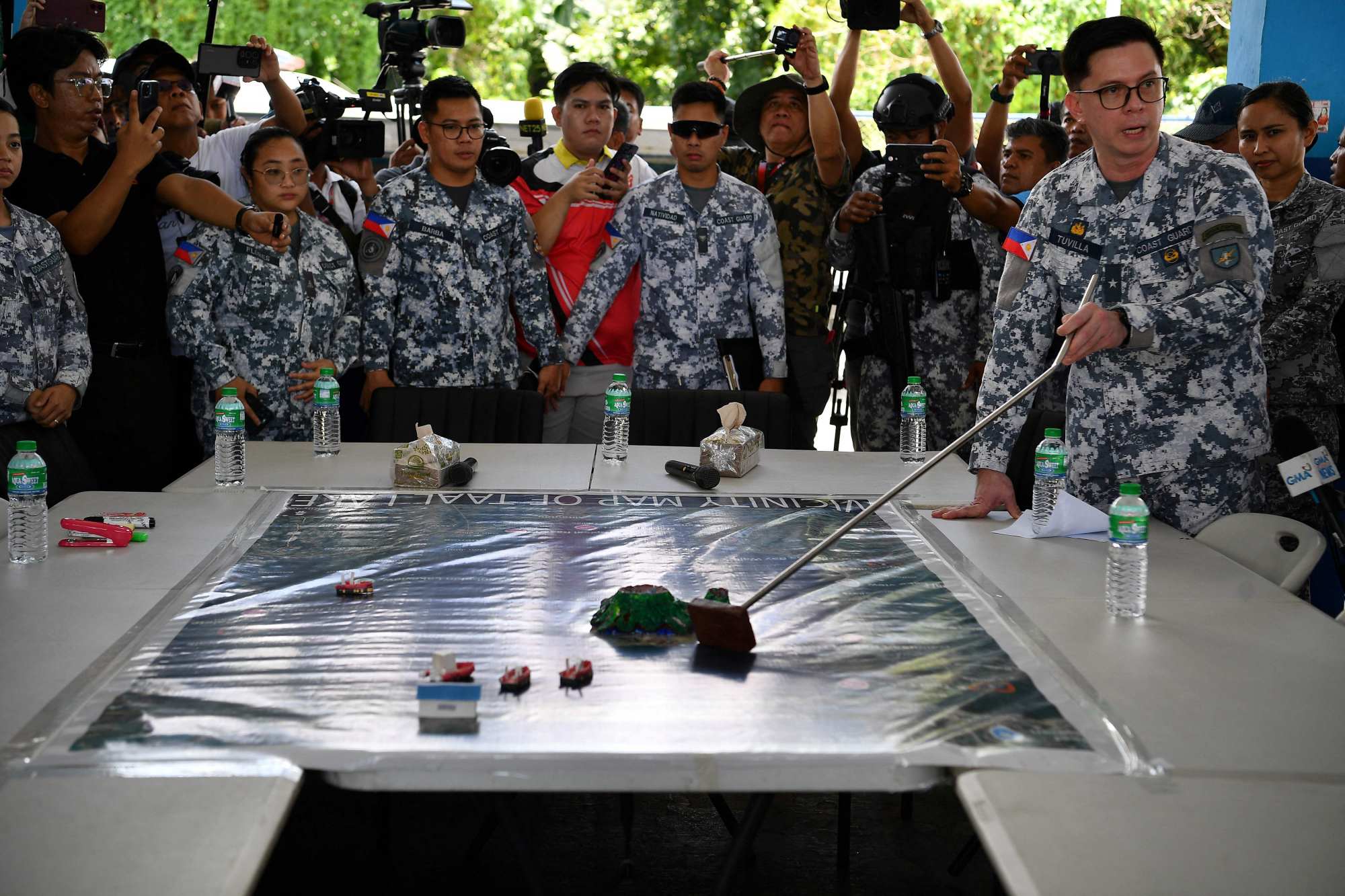Haunted waters: the Philippine murder mystery spoiling Taal Lake’s catch
As divers brave volcanic eruptions and storms to search for human remains, their discoveries have a nation demanding answers

The volcanic mist that hung over Taal Lake last week seemed to thicken with every rumour. Where fishermen once cast their nets, search teams trawled the depths for sacks of secrets.
Since July 10, up to 40 technical divers from the Philippines’ coastguard, aided by a remotely operated submersible, have recovered five sacks containing “suspicious objects” from the lake’s dark depths.
The search, triggered by the bombshell revelations of whistle-blower Julie “Dondon” Patidongan, has left the local community in Batangas province, some 63km (40 miles) south of Manila, reeling while sending shock waves across the nation.
Patidongan’s macabre account is harrowing. He claims at least 35 missing sabungeros (cockfighting enthusiasts) were kidnapped and slowly strangled with wire before their bodies were stuffed into weighted sacks and dumped in the lake near the municipality of Laurel.
He has implicated police officers allegedly corrupted by his former employer, gambling tycoon Charlie “Atong” Ang, and warned that up to 100 murdered men could have been dumped in the murky waters.
The lake, a 234 sq km (90 square-mile) expanse surrounding the Philippines’ deadliest volcano, is now a crime scene – but perhaps one of the most perilous investigators have ever known. On Thursday, Volcano Island erupted in what experts called a “minor phreatomagmatic event”, blowing a plume of steam 2km (1.2 miles) high. The very next day, operations were halted as Typhoon Wipha – then still in its nascent stages as a tropical storm – lashed the region, rendering the water opaque and treacherous.
Worse still for local fishers, as the divers have surfaced with their grim finds, demand for Taal Lake’s famed fish – like the unique freshwater tawilis sardine found there and nowhere else – has collapsed, with some local officials warning of a looming “state of calamity” as livelihoods vanish overnight.

‘Planted bones’
On social media, the search has come under withering scrutiny. Critics allege the “bones” found are bovine, not human, using the Filipino phrase tanim buto (planted bones) to accuse authorities of staging evidence – a sardonic play on tanim bala, in reference to the notorious Manila airport scam involving planted bullets.
“This country is full of politics and troll farms,” fumed Justice Secretary Jesus Crispin Remulla on Wednesday, dismissing the accusations as kalokohan (twaddle).
On Thursday, police forensics announced that six of the 91 bones recovered might be human. “Today, human remains were found in Taal Lake in the area pointed to us by our sources,” Remulla told a press briefing, citing evidence given by “Totoy”, an alias of Patidongan.
He said a cursory examination seemed to indicate that fragments of human ribs were among the finds, pending definitive forensic analysis.

Experts say many questions remain. Forensic pathologist Dr Raquel Fortun, a former chair of pathology at the University of the Philippines College of Medicine, pointed to the number of bones and the means of their recovery.
“Six human bones out of 91 … They actually counted? I wouldn’t [have],” Fortun told This Week in Asia, stressing that she had no insider knowledge of the case, other than what had been publicly reported.
Unhandled type: inline-plus-widget {“type”:”inline-plus-widget”}
“Were the contents of each sack processed individually, carefully?” she asked.
Local residents have reportedly scoffed at the notion of murder sacks, insisting the recovered objects are nothing more than anchors for fish cages. “Those who made excuses for the sacks, that they were there to anchor boats as weights, should also be investigated,” countered Fortun, who has since been asked to join the investigation.
“Only one human bone can make the case,” she said. “One human bone in a sack in Taal Lake as alleged. That must mean something.”
Far-reaching implications
One reason for the online mockery of Patidongan’s claims is due to him linking the killings to police officers previously implicated in murders during former president Rodrigo Duterte’s bloody “war on drugs”.
Remulla himself has drawn parallels between the sabungero disappearances and the extrajudicial violence of those years.
Many critics of the Taal investigation are known Duterte supporters. From his prison cell in The Hague, where he awaits trial for alleged crimes against humanity, the former president has dismissed Remulla’s remarks as “preposterous”, after being briefed on them by his daughter Sara.
The justice secretary announced on Friday that the search of the lake had been suspended owing to the dangerous conditions and poor visibility caused by Wipha. He has since centralised the release of information, warning agencies against piecemeal disclosures and vowing his office alone will be the one to brief the nation on any progress.
I took a moment before I took my first bite. [I thought] am I really going to eat this?Rafael Vicente Calinisan on his recent fish supper from Taal Lake
Rafael Vicente Calinisan, vice-chairman and executive officer of the Philippines’ National Police Commission (Napolcom), has insisted that the truth will come to light.
“Napolcom under my watch will resolve cases within 60 days … while still ensuring due process,” he told This Week in Asia. “It won’t take decades.” At least 15 police officers have been implicated in the case and are now under investigation by the commission.
For Calinisan, the case is personal. His family hails from Balakilong village near the town of Laurel – the very spot where the sacks of bones were recovered. The case “is literally on my mind 24/7,” he said. “I am very bothered that our place is now put in the spotlight for very bleak reasons.”
On July 11, as fresh sacks were being pulled from the lake, Calinisan posted a photograph on social media of his supper: tawilis and tilapia, caught in Taal.
“I took a moment before I took my first bite. [I thought] am I really going to eat this?” he told This Week in Asia.
“But if you really think about it, if the allegations of alias Totoy were true, the incidents happened about four years ago. A considerable amount of time has already lapsed … So I soaked it in vinegar and prayed. But in all seriousness, the Taal Lake tawilis is one of a kind.”
He called it a symbolic gesture: a message to the Philippine public that the sabungero case matters to him, both as an official and as a Filipino.
On Sunday, Batangas Governor Vilma Santos-Recto shared a video of herself eating tawilis for breakfast, declaring, “Nothing to worry [about] with all these issues about our Taal, nothing to worry.” She pointed to the fish’s diet: plankton, not flesh.
Yet the assurances are apparently ringing hollow for many. Local fish vendors report that sales have halved since the case made headlines and prices are down 40 per cent – despite the Bureau of Fisheries and Aquatic Resources reaffirming the fish are “safe to eat”, as they inhabit only the lake’s shallows, while the sacks were retrieved from more than 50 metres (164 feet) deep.
As the search resumes, the waters of Taal remain troubled, and the community awaits the return of trust to its storied volcanic shores.